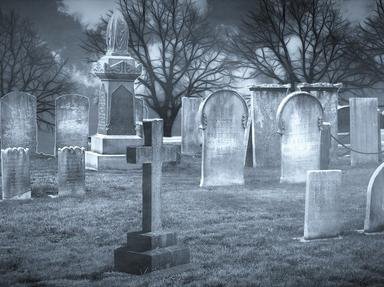Quiz Answer Key and Fun Facts
1. Our first grave of the tour, number 31754, marks the resting place of a man known as the "grandfather of English detective fiction", and whose novel "The Moonstone" is often cited as the first English detective novel. Who was the author?
2. In our second plot is a man, born Jean-François Gravelot, a French tightrope-walker and acrobat who gained fame by becoming the first person to cross Niagara Falls gorge on a tightrope. By what name was he better known?
3. The next grave we visit contains the remains of the London-born man who designed the analytical engine, recognised as the first fully-programmable computer, built from notes found after his death. Who was this famous scientist?
4. Our next plot is empty. It once belonged to the first man awarded the title of National Hero of Jamaica, a prophet of Rastafarianism and trumpeter of the cause of Pan-Africanism. He was originally buried in Kensal Green Cemetery during World War II before being exhumed and taken to Jamaica in 1964. Who was he?
5. Next we visit the West London Crematorium which is situated within the cemetery. In 1991 a funeral was held here for a pop singer, born as Farrokh Bulsara in Zanzibar, following his premature death from an AIDS-related illness. The ceremony was attended by surviving members of his band; Brian May, Roger Taylor and John Deacon. By what name was he better known?
6. Exiting the crematorium we chance upon the grave of one of the foremost novelists of Victorian England. The name of the gravestone tells us that it is the resting place of the author of "Vanity Fair" and "The Luck of Barry Lyndon". Who is the author?
7. The next grave we visit is another Victorian novelist, beloved of British Prime Minsters, John Major and Harold MacMillan. Possibly best known for the series of novels, "The Chronicles of Barsetshire", who is this author?
8. As we turn the corner we see a very grandiose tombstone, appropriate for one of Victorian London's foremost architects, Philip Hardwick. Whilst not a household name, Hardwick's achievements were notable. He was the architect who designed and oversaw the building of London's first inter-city mainline railway station. Which station was it?
9. Alongside Hardwick's grave, appropriately enough, is the grave of a London businessman who was once also synonymous with the railways. The chain of shops which still bear his name, were initially situated in railway stations. His initials are recognisable to newspaper and book readers throughout the country. Who is the occupant of this plot?
10. As we head back towards the cemetery gates, we have one last tomb to take in. Suitably, it is a magnificent construction, befitting the monumental achievements of the man it entombs and commemorates. His legacy includes the first tunnel ever built under a river, now part of the London Underground, Clifton Suspension Bridge and the Great Western Railway. Who is this legendary engineer?
Source: Author
Snowman
This quiz was reviewed by FunTrivia editor
bloomsby before going online.
Any errors found in FunTrivia content are routinely corrected through our feedback system.

